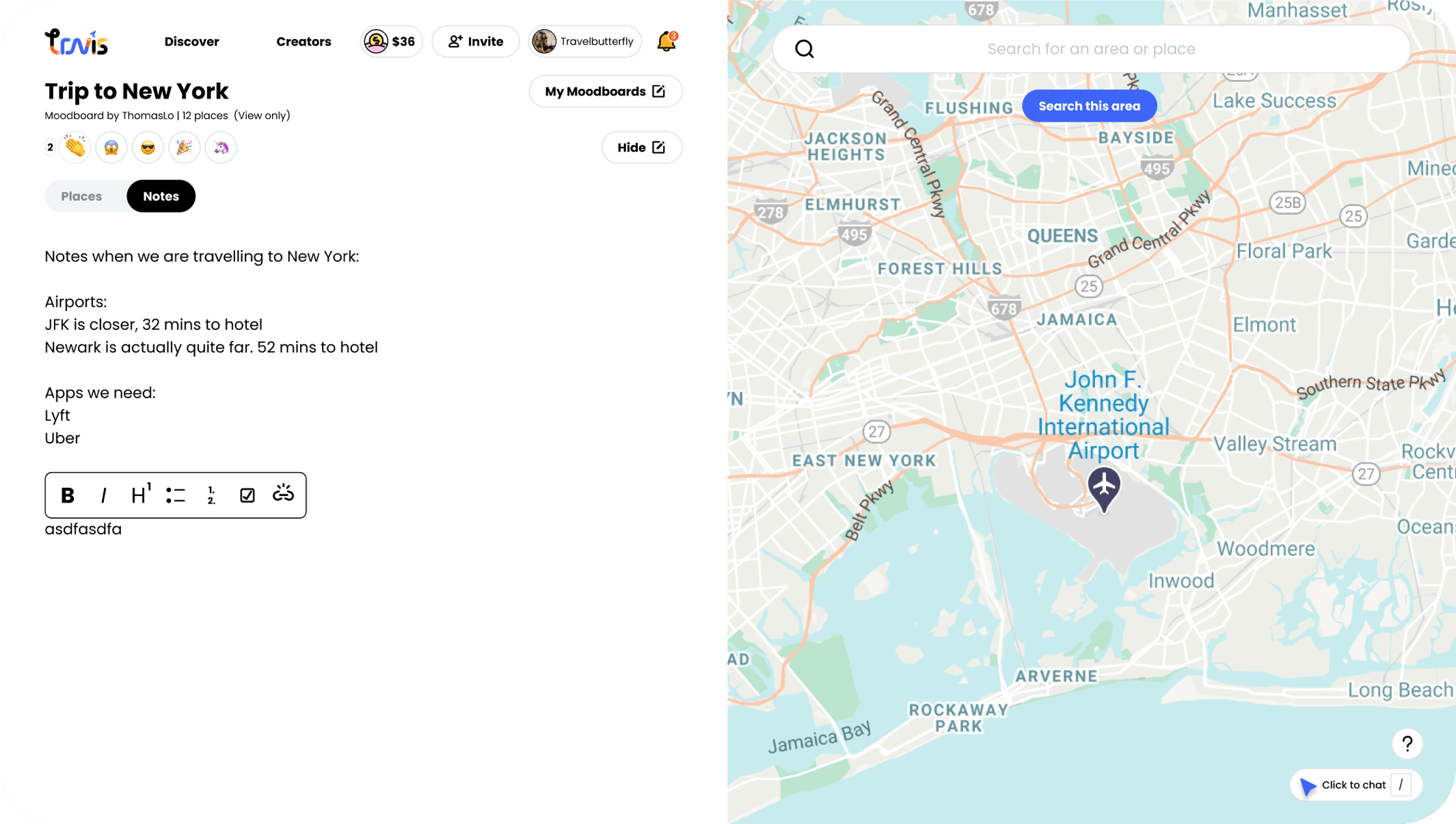Collaborative Trip Planner
Role: Head of Product
Like Pinterest and Google Maps had a baby. Travis launched Moodboards - a collaborative trip planner for travelers to plan trips with friends - and scaled from 0-100,000 users in 12 months.
-
Our goal at Travis was to make it fun and easy for travelers to plan trips with friends in one place.
Led end-to-end research, design, build and GTM of Moodboards
Ran experiments to optimise adoption and retention
Managed remote team of 5 during COVID
-
[1] User research + user segmentation
Conducted online surveys and user research sessions to dive deep into travel planning behaviors, preferences, needs and painpoints
Identified priority use cases to drive focus:
⚡️ Find more recommended places around places already saved in Moodboard
⚡️ Organize places saved into different days, categories, etc - as they progressed with the planning process
⚡️ Have one place to capture extra notes, links, and loose thoughts - instead of keeping a separate notes / word doc alongside their Moodboard
⚡️ Easily share trip plans with friends - instead of an ugly spreadsheet that many were embarrassed by
[2] Strategy and product roadmap
Defined objectives, our key proposition and prioritised all features based on alignment to business goals, user impact and technical feasibility
In the time of COVID, we were navigating ambiguous external factors and needed to adapt to find active travelers first in AU, then the US where there was more active travel
[3] Design, testing and build
Worked closely with Design to design and prototype all features and user flows
Worked closely with Engineer to understand tech contraints when they arose and devised workarounds ASAP
[4] GTM
I worked with our Marketing Manager to refine product propositions, plan and execute campaigns across organic social, influencer, social ads and SEO - to identify our most effective acquisition channels
Product Hunt launch, Top 5 Products of the Day
Developed brand partnerships and execute brand/influencer campaigns - with hotels, local councils, travel brands, with a domestic travel focus in US and AU
-
🎉 Scaled from 0-100,000 users in US and Australia over 12 months
🎉 Increased average places saved per user through experimentation
Details
Search
This was a difficult task in design and engineering as the interface needed to be super simple and inituitive, yet the tech implementation involved designing a technical solution utilising multiple APIs and technique to overcome a few shortcomings. There were 3 parts ensuring a simple search experience for users - the search term, speed of the search mechanic, and relevance of the search result. Foursquare Venue API was implemented to reduce search cost while providing accurate place data.
One challenge we faced, was that a text-based search was technically unfeasible. To overcome this, we adjusted the design to include 1) a placeholder text prompting users to search a city - resulting in suggested places shown on the map, and 2) then using the map-based location as a parameter to enable a user to search for the name of a place.
The result was a seamless search experience.
Save places + Organise by tags
Flexibility in organization is especially important for trip planners. The Moodboard lets users re-order their list of places any way they like with a drag-and-drop. For more granular sorting, we designed a flexible tagging system. Users can customize the name and color of tags, and quickly filter saved places based on tags.
Real-time collaboration + chat
We wanted to make trip planning fun and collaborative. Each Moodboard can be shared via a simple link, and permissions to edit can be turned on & off. Users who are online at the same time can follow each other’s cursors on the map, and chat in real time on the Moodboard.
Notes
We found that trip planners usually had a Google Doc or Notes of some sort, to record any loose notes and links, or informative instructions for others they travel with. Notes was designed to eliminate the need for a separate doc altogether! This space is free of clutter and allow for rich text edits, users can also link places they’ve added to the Moodboard directly to this area.





















